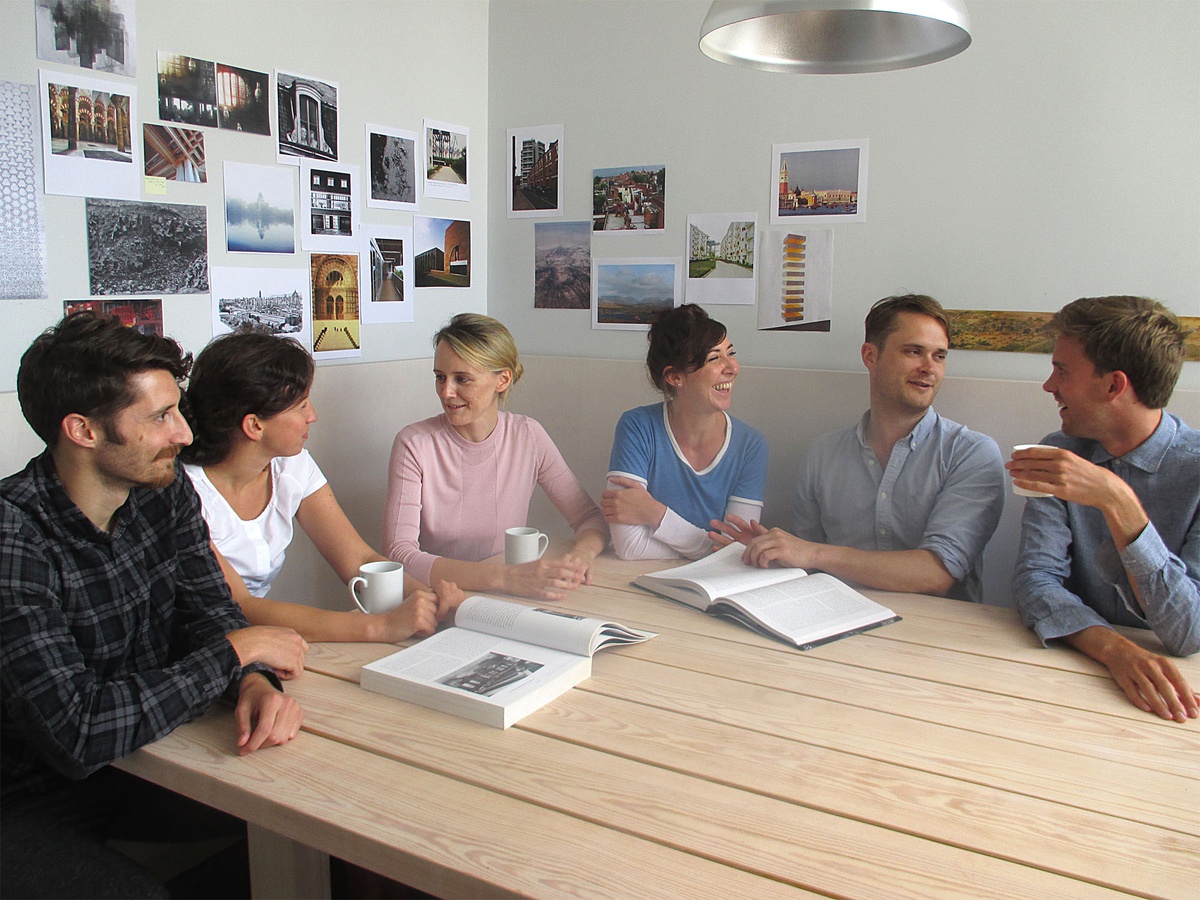FRAMELESS ARCHITECTURE
AUGUST 2015

Our classification of the world is the result of a desire to impose order on the chaos we are born into. In nature we classify the species, in society we classify our relationships, and in architecture we classify the spaces we design and inhabit. In many cases, classification is a useful tool that allows us to root ourselves in time and space.
Classification can also be the enemy of imagination, suffocating our desire to wonder and discover new associations. It can limit the understanding of what surrounds us and disjoint elements that should not be separated. Framing perception can become a reductive force.
In his book Atlas: How to Carry the World on One’s Back, Didi Huberman uses ‘atlas’ in its broadest sense to mean a ‘collection of images’. Huberman explores two different ‘uses of reading’: a denotative sense in search of messages, and a connotative sense in search of montages. The dictionary is a predictable tool for the former, and the atlas is the ‘unexpected apparatus’ for the latter[1].
The atlas is frameless and endless. It surpasses boundaries and restrictions and is in a state of constant renewal. The atlas enables our imagination to trigger new associations, new relations. Although we may start with a search for the specific, we may then wander endlessly, unlimited by a defining frame.
Architectural education, architectural research and architectural practice have suffered for too long from being limited by a defining frame that has placed them in different dictionary entries. It is now time to rethink this model, which shapes our lives, our careers, and ultimately our contribution to society. If we are to replace the dictionary with the atlas, if we are to substitute the definitive meaning with the endless search for new relations, we will have a new model of architecture where education, research and practice are interwoven and intrinsic to one another.
For this new model to succeed, we must completely awaken our imagination. Education, research and practice will be symbiotic and won’t be understood without each other. As a result, transverse readings and meanings will develop within our work. These will be found not only in the individual but also in the collective. In our office, inspired by Aby Warburg’s Mnemosyne Atlas, we will develop our own Atlas where images of our endlessly evolving inspirations and aspirations will be captured. Our Atlas will be a new ground from which meaning, space and relationships will grow. Our Atlas will enable us to read what has never been written[2].
[1] Georges Didi-Huberman (2010). Atlas. ¿Cómo llevar el mundo a cuestas?. Madrid: TF Editores/Museo Reina Sofía . 16-17.
[2] Georges Didi-Huberman (2010). Atlas. ¿Cómo llevar el mundo a cuestas?. Madrid: TF Editores/Museo Reina Sofía . 14.
SCREENS
JUNE 2015

Images: Avenham Park Pavillion, Preston. The Institute of Timber, Detroit
‘What do you see when you look up through the trees? Try to imagine this moment in a pretended place or part of a journey through a particular sequence of spaces. How does one describe this experience? What is it about spaces in nature, for example forests, which make them fascinating yet at the same time unsettling places to inhabit? A forest offers a place of refuge and natural beauty where the element of surprise is all part of the experience’
The idea of nature as a spatial experience and a driver for architectural form was a question that ran through my academic work and has subsequently led to an obsession with a perceptual and evolving architecture. It is interesting that my time in the office has allowed me to both reflect and discover parallels that run through similar themes in the work of the practice. A pursuit for a “thicket-like” characteristic, which allows for shifts in spatial qualities and a variation of patterns that overlay like woven surfaces to define space are just some of the mannerisms that I have begun to recognise.
I compare my own attempt to generate a kind of place that is animated, brightening as you ascend towards the canopy when reading the blurred lines of the roof of the pavilion designed for a woodland park in Preston. The structure is designed as a number of layers of mesh to capture rain whilst creating a display of shadows that activate the building beneath. As a competition proposal, the structure was never fully realised yet it has been the ideas established during this process that still resonate today. By staggering the building between the tree density, the line of the pavilion is undefined breaking the traditional form of constructing space and allowing a new reading of the building and landscape. Particularly enlightening in the search for the enclosure of space is a fruition of a screen-like quality that works as a surface and also as a generator of it’s tectonic form.
The use of the screen as a ‘device’ in our architecture allows elements to become not only separators of rooms or the external environment but also actuators for unique and unimagined spatial experiences. In search of this architecture is an attempt to purposefully discover a different architecture and an unplanned result that wouldn’t necessarily be reached through something un-natural.
Benni Allan graduated from the Bartlett with Distinction in 2014, and has been working on a project for Jesus College, Cambridge since joining Niall McLaughlin Architects. In February 2015, Benni was named as one of the nation’s up-and-coming designers and ‘One to Watch’ by the Design Council to represent the future of British design. His project the ‘City of Forests’ looked at beautifying Detroit through reforestation strategies to promote a denser, greener and more sustainable future in which timber becomes the main economic output. As Detroit continues to struggle with the effects of massive industrial changes, this more positive image of vacancy as an asset opens new discussions about the future post-industrial city.

